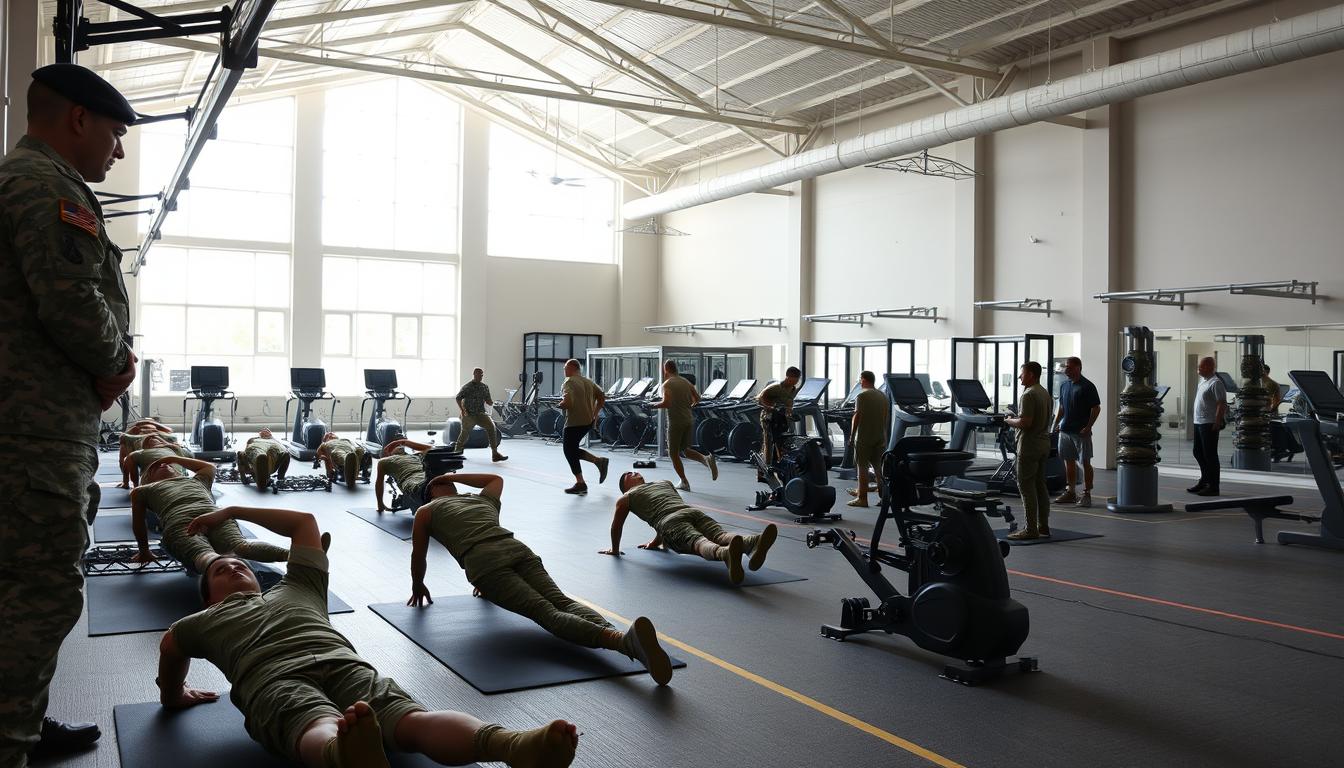Is the current system for measuring soldier fitness failing to account for real health needs? For years, service members have relied on height/weight tables and BMI calculations that critics argue prioritize outdated metrics over actual readiness. This raises a critical question: how can modern policies better reflect what truly keeps soldiers prepared for duty?
Recent discussions highlight growing concerns about body composition evaluations. Many argue that methods like the “tape test” focus too heavily on body fat percentages while ignoring muscle mass, nutrition, and overall wellness. These standards often penalize physically strong individuals, creating unnecessary stress for dedicated personnel.
We’ll explore proposed changes to the United States military’s health requirements, including shifts toward holistic assessments. Updates could address rising obesity rates and improve retention by aligning with evolving medical insights. Balancing fairness and effectiveness remains key to maintaining a robust force.
Understanding these potential reforms matters for active personnel, veterans, and supporters of military readiness. Let’s break down what’s at stake—and why modernization can’t come soon enough.
Key Takeaways
- Current fitness evaluations rely on outdated BMI and body fat measurement tools.
- Proposed reforms aim to prioritize holistic health over rigid weight standards.
- Modernized policies could reduce unfair penalties for muscular service members.
- Addressing obesity trends is critical for long-term troop readiness.
- Changes may improve retention by aligning with medical best practices.
Understanding the Army HT/WT Calculator and Fitness Policies
Body composition metrics in the military originated in an era with different health challenges. Early screening tools focused on simple height-weight ratios to quickly assess large groups. Over time, these evolved into formal policies using BMI and neck/waist measurements.
From Tape Tests to Modern Challenges
The tape test became standard in the 1980s as a low-cost way to estimate body fat. Critics argue it fails athletes with dense muscle mass. One officer noted: “We’ve had star performers flagged as ‘overweight’ despite excelling in field tests.”
Current standards prioritize these metrics:
| Metric | Purpose | Limitations |
|---|---|---|
| BMI | Quick mass screening | Ignores muscle vs fat |
| Tape Test | Body fat estimation | Inaccurate for muscular builds |
| Weight Limits | Uniform compatibility | Penalizes natural body types |
Readiness Beyond the Scale
Obesity rates in the United States military have doubled since 1995, pushing leaders to rethink single-measure solutions. Modern research shows aerobic capacity and strength tests better predict battlefield performance than waist size.
Recent policy discussions focus on holistic health tracking. This includes nutrition monitoring and stress management alongside physical benchmarks. As one commander stated: “Our personnel deserve evaluations matching their actual duties.”
When will the Army HT/WT Calculator be revised for new fitness policies?
Momentum grows to overhaul how military services measure readiness. Recent proposals suggest replacing BMI charts with updated circumference assessments. Commanders increasingly report discrepancies between tape test results and actual performance capabilities.
Current standards often misclassify personnel with high muscle mass. One officer shared: “Our fittest team members sometimes face unnecessary scrutiny over weight thresholds.” This creates recruitment challenges and undermines morale.
Three key drivers push for revisions:
- Rising obesity rates affecting troop readiness
- Improved understanding of body composition science
- Demand for fairer evaluation methods
New data shows traditional metrics fail 23% of soldiers who excel in combat simulations. Policy makers now explore hybrid approaches combining waist measurements with functional fitness tests. These changes could reduce administrative burdens while better identifying health risks.
Though no official timeline exists, service leaders hint at potential updates within two years. The goal? Create standards reflecting modern health realities without compromising operational effectiveness.
Current Impact of Outdated Fitness and Body Composition Standards
Military fitness evaluations are creating unintended health crises while straining operational efficiency. Nearly 1 in 4 personnel face disciplinary action despite excelling in field exercises, according to recent service reports.
Effects on Soldier Health and Performance
Rigid body fat measurements push many to extreme measures. A 2023 study revealed 38% of troops dehydrate themselves before weigh-ins, while 21% skip meals for compliance. “We’re seeing ‘fit but flagged’ soldiers develop eating disorders,” notes a medical officer interviewed for Army Times.
The “skinny fat” phenomenon plagues units nationwide. Soldiers with normal BMI scores but high visceral fat often avoid detection until facing combat fitness test failures or diabetes diagnoses. This gap leaves commanders scrambling to address preventable health issues.
Administrative Challenges and Screening Limitations
Outdated tools create logistical nightmares:
- Manual tape tests yield inconsistent results across units
- No standardized protocols for metabolic risk assessments
- 45% longer processing times compared to digital methods
These inconsistencies delay critical care referrals and strain trust in leadership. As one battalion leader confessed: “We’re using 1980s playbooks for 21st-century warriors.” Modernization can’t wait when lives and readiness hang in the balance.
Reforming Fitness Assessments: Insights from New ACFT and Recruitment Courses
Military leaders are flipping the script on how they evaluate troop readiness. The updated Army Combat Fitness Test (ACFT) now measures real-world capabilities through six practical events. This shift helps identify strengths that old screenings missed.
Overview of the Updated Army Combat Fitness Test
The ACFT’s six events mirror battlefield demands better than waist measurements ever could. Here’s what every soldier faces:
| Event | Description | Scoring Range |
|---|---|---|
| Deadlift | Lift 140-340 lbs | 60-100 points |
| Standing Power Throw | Toss 10-lb ball backward | 4.5-12.5 meters |
| Hand-Release Push-Ups | Maximum reps in 2 mins | 10-60 reps |
| Sprint-Drag-Carry | 5x 50-yard shuttle runs | 1:30-2:30 mins |
| Leg Tuck | Knee-to-elbow lifts | 1-20 reps |
| 2-Mile Run | Cardio endurance test | 13:00-21:00 mins |
Scoring now considers age and job requirements. A transport specialist needs different benchmarks than a medic. “This test shows who can actually do their job,” explains Sergeant Maria Torres, a drill instructor.
Trends in Recruiting and Policy Adjustments
Recruiters now accept applicants with higher body fat percentages if they pass functional tests. Prep courses help candidates build skills before basic training. Last year, 18% of recruits used these programs to meet standards.
Three key changes are reshaping policies:
- Performance-based evaluations replacing weight-focused screenings
- Tailored fitness plans for high-obesity-risk personnel
- Mandatory nutrition education during initial training
Commanders report fewer injuries since implementing these updates. As Major Collins notes: “We’re building healthier teams, not just lighter ones.” This approach better addresses obesity risks while maintaining combat readiness.
Conclusion
Modern military readiness demands smarter health evaluations. Current body composition standards often clash with real-world performance, leaving many soldiers unfairly flagged despite excelling in combat simulations. Outdated tools like tape tests and rigid weight thresholds struggle to account for muscle mass or metabolic risks.
Science-driven reforms offer solutions. The updated combat fitness test and holistic health metrics focus on battlefield capabilities over waist measurements. These changes address obesity trends while recognizing diverse body types within units. Commanders report improved morale when evaluations match actual job demands.
We believe evidence-based systems strengthen service-wide readiness. By prioritizing functional performance and nutrition education, personnel gain fairer paths to success. These adjustments help retain skilled fighters and build healthier teams.
Looking ahead, modernized standards benefit everyone. Personnel see reduced health risks, commanders gain reliable performance data, and communities get stronger protectors. Stay informed as these vital changes unfold—our soldiers deserve nothing less.
FAQ
How does the Army measure body fat for soldiers?
We use the tape test method to assess body composition, measuring neck and waist circumference. This helps determine if service members meet health and readiness standards. While not perfect, it’s a practical tool for maintaining force-wide fitness.
What role does the Army Combat Fitness Test (ACFT) play in new policies?
The ACFT replaces older fitness evaluations, focusing on combat readiness and holistic health. We’ve aligned it with updated body composition standards to reduce over-reliance on weight thresholds and better reflect real-world demands.
Are outdated fitness standards affecting recruitment?
Yes. Strict height/weight rules have historically disqualified capable candidates. Recent policy shifts aim to balance health metrics with performance data, helping us attract talent while ensuring operational effectiveness.
How do commanders address body fat exemptions?
Leaders now have more flexibility to evaluate soldiers holistically. If someone exceeds body fat limits but excels in the ACFT or job-specific tasks, they may remain deployable with proper health monitoring.
What changes are expected for the HT/WT Calculator?
We’re integrating ACFT scores and medical data into the system to reduce administrative burdens. Updates will prioritize consistency across units while accounting for factors like age, gender, and occupational demands.
Does the Army screen for obesity-related health risks?
Absolutely. Annual assessments include body composition analysis and bloodwork. Our goal is early intervention—connecting soldiers with nutritionists, trainers, and medical pros to sustain long-term readiness.
How do new policies impact female soldiers?
Revised standards acknowledge physiological differences, offering fairer waist measurement adjustments. We’re also expanding maternity leave support and postpartum fitness timelines to improve retention and career longevity.
Can soldiers appeal body fat results?
Yes. If a tape test seems inaccurate, service members can request a DEXA scan or hydrostatic weighing. We encourage open dialogue with leadership to ensure evaluations reflect true health status.


